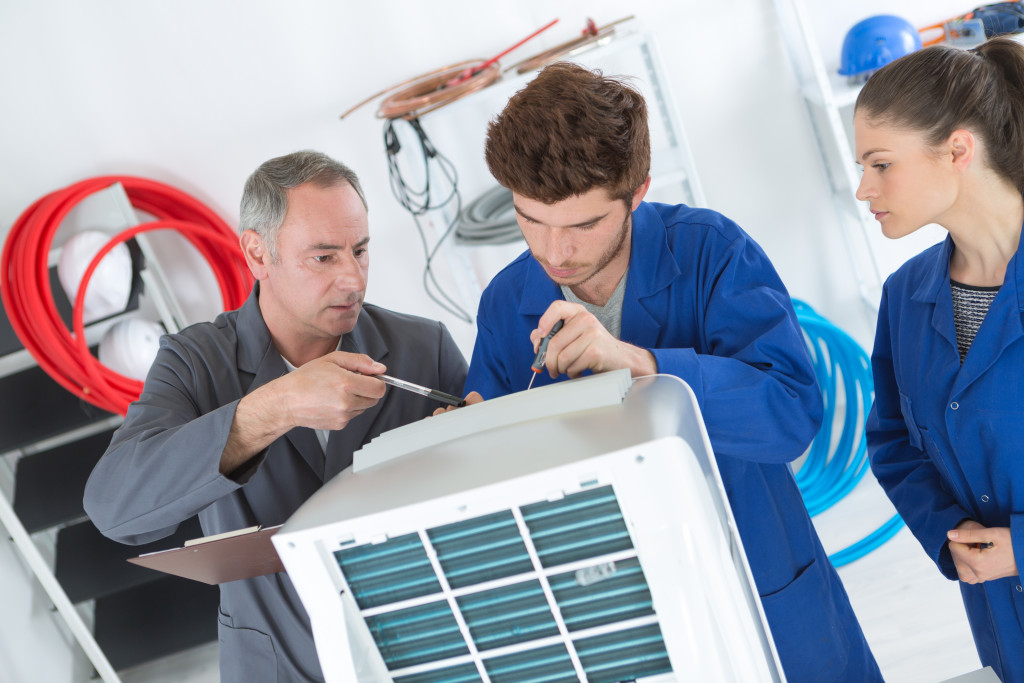Business construction, like any other construction project, needs regular preventive maintenance to perform at its peak efficiency, and prevent costly repairs. When you create a preventive maintenance plan and schedule, the result will be less downtime on the job, which means higher productivity as you can finish projects faster than other contractors. You’ll not only save your business money but also keep your employees comfortable and safe on the job.
Construction often requires many pieces of expensive equipment to be on-site at all times, but if you don’t have a maintenance plan in place, the equipment may break down and become damaged or destroyed. A proactive maintenance plan can help protect your construction company’s assets and ensure that your staff members are well-versed in the upkeep of each piece of equipment on-site before it ever breaks down or becomes damaged.
The following steps can help you create an efficient and effective preventive maintenance plan for your business construction.

What Is Preventive Maintenance?
It’s a series of checkups, tune-ups, and inspections that keep your property in good working order. These pre-scheduled inspections are done regularly, usually on a monthly or bimonthly basis. Depending on what kind of project you’re working on, it may not be just preventing you from an immediate breakdown, but from an injury or even death in some cases. Why? Because preventive maintenance is all about identifying trouble before it happens. It gives you time to fix something before small problems get out of hand.
Why is it important?
There are several good reasons why your types of machinery need to be in tip-top shape. By taking preventative measures and scheduling regular checkups, you will:
• Save money on major repairs. When problems are caught early, they are less costly and easier to repair.
• Extend equipment life cycle. Having a preventive maintenance plan means that you’ll be able to spot issues before they become more serious problems.
• Avoid unplanned outages and repair costs. By having regular maintenance checks, your business construction will be in better shape and able to avoid major breakdowns or system failure.
• Keep employees safe, comfortable, and productive.
• Meet legal compliance requirements.
• Schedule regular tune-ups or inspections that include an inspection by a certified professional to ensure your business construction is in optimal condition. It should be done at least once per year but can be done more often if problems arise.
How to Develop A Successful Preventive Maintenance Plan
Before anything else, it’s important to identify all of your equipment and machines that fall under preventive maintenance (PM). It includes pumps, motors, equipment, furnaces, and boilers, along with heating and cooling systems. Once you’ve identified all of these items in your building, determine how much time has passed since each one was last checked.
For example, if a motor is at 100 hours but hasn’t been checked in a decade, it should go on top of your list for repairs. If you work with contractors or other outside resources to keep your equipment maintained properly, speak with them about their process when coming up with your plan. They might have insight into what works well and doesn’t work well when developing a preventive maintenance program based on their experience dealing with facilities like yours.
Components of A Good PM Program
Having a preventative maintenance program (PMP) in place can help you minimize unexpected business interruptions. Working with a network of professional contractors will keep your business running smoothly and reliably, avoiding costly breakdowns, injury, and loss of productivity. By implementing a good PMP at key points in your building’s life cycle, you can extend its life and save money on repairs down the road. Here are some tips that’ll help make sure your PM program is on-point:
- Actively manage important elements like plumbing and HVAC systems, so they don’t degrade over time.
- Practice routine inspections and replacements of items like AC units, smoke detectors, carbon monoxide alarms, wiring, fuses/circuit breakers — as well as any other large mechanical system since they age or experience excessive wear-and-tear over time.
- Make sure to prevent not just accidents but pollution as well. A stormwater management plan (SWMP) helps you avoid violating environmental regulations, having fines and penalties imposed on your business, and even prosecution. It can also help curb runoff from your building’s site, allowing you to clean up groundwater contamination.
It is in your best interest as a business owner to keep your equipment in top operating condition. You want your employees to work efficiently and safely. The overall productivity of your workforce increases when they can focus on doing their jobs well rather than spending valuable time fixing issues that could have been prevented if caught early. By implementing a preventive maintenance program, you can ensure that issues with your facility and its equipment are caught early before they become costly problems.
Following a preventive maintenance plan can ensure that your business construction is always up and running. By following a proactive strategy, you can make sure that everything from basic repairs to more complex issues (like malfunctioning HVAC units or outdated fire alarms) are dealt with immediately. If you’re experiencing issues, start by identifying where they are coming from, then come up with an action plan.



